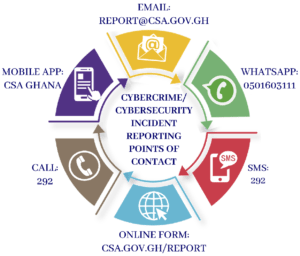Phishing attacks have become one of the most prevalent and serious cyber risks in today’s digital world. These fraudulent schemes seek to deceive people into disclosing private information including usernames, passwords and financial information. We will delve into the world of phishing attacks in this article, examining its methods and its consequences. To effectively limit the risks associated with phishing attempts and prevent your personal and professional information from getting into the wrong hands, we will discuss useful methods and best practices.
Understanding phishing attacks
Phishing attacks are designed to deceive individuals and gain unauthorised access to their sensitive information. Attackers often impersonate reputable entities – such as banks, social media platforms or government organisations – to establish trust and manipulate their victims. By understanding the common types of phishing attacks and their anatomy, individuals can become more aware and better equipped to identify and protect themselves against such threats.
What is phishing?
Attacks including phishing utilise deceptive techniques to coerce people into disclosing their personal data. Attackers’ main objectives are typically to steal personal information, perpetrate financial fraud, or obtain illegal access to systems or accounts.
Types of phishing attacks
Phishing attacks can take a variety of forms and can target victims in many ways.
The following categories are the most typical:
- Email phishing: Attackers send fake emails with malicious links or attachments while posing as trustworthy organisations.
- Spear phishing: It is more difficult to identify this targeted attack because the messages have been crafted to look like they are from reliable sources.
- Smishing (SMS phishing): Attackers use text messages to trick individuals into revealing sensitive information or downloading malicious content.
- Vishing (voice phishing): Attackers utilise voice calls to trick victims into disclosing personal or financial information.
- Pharming: Attackers manipulate DNS settings or create counterfeit websites to redirect victims to fraudulent platforms.
Anatomy of a phishing attack
Phishing attacks involve several stages, each carefully crafted to exploit human vulnerabilities. Attackers conduct research to gather information about their victims, then craft compelling messages that create a sense of urgency, fear or curiosity. These messages are delivered through various channels, and once victims take the desired action, such as clicking a link or providing personal information, the attackers exploit the obtained data for their malicious purposes.
Consequences of phishing attacks
The consequences of falling victim to a phishing attack can be severe:
- Identity theft
Attackers can use stolen information to assume someone’s identity, opening the door to various fraudulent activities.
- Financial losses
Phishing attacks can lead to unauthorised transactions, drained bank accounts, or credit card fraud.
- Reputational damage
Both individuals and organisations can suffer reputational harm if their information or data is compromised.
- Compromised accounts and systems.
Phishing attacks can result in unauthorised access to personal or business accounts, leading to further data breaches or cybercrimes.
Defending against phishing attacks
Both individuals and businesses must implement proactive risk-mitigation strategies to protect themselves from phishing attacks. The potential impact of phishing attacks can be significantly reduced by increasing awareness, installing security measures, and practising secure procedures.
- Raising awareness and education
The prevention of phishing attacks depends heavily on cyber-security awareness. People and employees should regularly get training on the characteristics of phishing attacks, how to spot fraudulent emails or messages, and the significance of immediately reporting such events. People become more attentive and less prone to fall for phishing scams when we promote cyber-security awareness to society.
- Effective email and web filtering
Identifying and blocking phishing emails, complex filtering methods must be implemented. SPF (Sender Policy Framework), DKIM (Domain Keys Identified Mail), and DMARC (Domain-based Message Authentication, Reporting, and Conformance) are three examples of technologies that can be used to authenticate emails and confirm their validity. Malicious websites can be identified and blocked with the use of URL analysis tools and website reputation services.
- Multiple-factor authentication (MFA)
User accounts are made more secure by using multi-factor authentication (MFA). By turning on MFA, users are forced to give other authentication factors in addition to their usernames and passwords, such as one-time passwords (OTP), biometric information, or physical tokens. Even if login credentials are stolen via phishing, the risk of unlawful access is much minimised as a result.
- Secure password practices
To protect yourself from phishing attacks, you must use strong, distinctive passwords. Instead of using simple passwords that can be guessed, people ought to create complex ones that include uppercase and lowercase letters, numbers, and special characters. By generating and securely storing passwords, password managers assist in minimising the danger of password reuse by removing the need for users to remember their passwords.
- Email conversation demands extra care
People should take caution and follow these steps to prevent being a victim of phishing emails:
- Examine the email address of the sender for irregularities or slight modifications by reviewing it.
- Avoid clicking on suspicious or unidentified websites by hovering over links to check the destination Uniform Resource Locator (URL).
- Avoid opening attachments from unknown or suspicious sources because they can be infected with viruses or malware.
- Keeping systems up to date.
Updating software on schedule is essential for ensuring strong security. Operating systems, web browsers and applications should all regularly be patched to guarantee that vulnerabilities are quickly fixed. Enabling automatic updates streamlines the procedure and minimises the chance that known vulnerabilities will be exploited.
- Incident response and reporting
One way for people and organisations to effectively handle phishing scenarios is to establish an incident response strategy. It should have instructions on how to report phishing attempts promptly and provide specific routes for doing so. It could be required to work together with security teams and law enforcement organisations to mitigate the damage and take the proper countermeasures against attackers. For instance, the Cyber Security Authority (CSA) of Ghana Incident Reporting Form is one of the point of contacts that is available on CSA website (https://www.csa.gov.gh/report) for reporting cyber incidents. The information provided is sent to the CERT-GH for triaging and further investigation. CERT-GH (Computer Emergency Response Team) is the national point of contact (PoC) for coordinating cyber-security incidents. Other point of contacts at the CSA are:
Email: [email protected]
Call: 292
SMS: 292
WhatsApp: 0501603111
Mobile App: CSA GHANA

Conclusion
Phishing attacks remain a serious risk in the cyberspace. People as well as businesses can strengthen their defences by understanding the various phishing attack types and methods, and putting these into practice along with effective mitigation strategies. Promoting cyber-security awareness, utilising cutting-edge filtering technologies, implementing multi-factor authentication, using secure passwords, being alert when sending emails, keeping systems up to date, and having an incident response plan in place are important steps in reducing the risks associated with phishing attacks. We can successfully defend against phishing attacks and prevent the misuse of our personal and professional information by combining these security measures.
Joseph is Lead Auditor|Member, IIPGH
For comments, contact +233245054509 or email [email protected]










